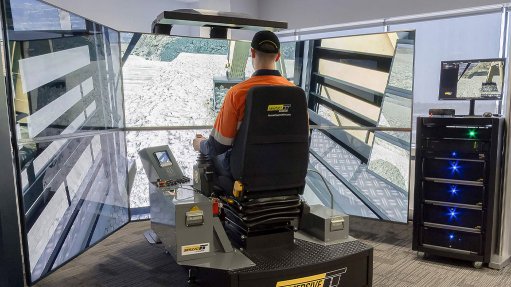
IDEAL MINING MARKET During positive market conditions, Immersive Technologies will mostly receive requests focusing on pre-screening, accelerated onboarding and cross training
The strong and sustainable state of the Australian mining market, as well as the increasing prevalence of automation in mining operations and processes, is contributing to consistent business and involvement for global mining technology and workforce optimisation firm Immersive Technologies.
Australia’s strong mining performances stem from strong commodity prices, the exploration of new technologies associated with automation and several years of increased demand, says Immersive Technologies Australia Pacific regional VP Greg Karadjian.
He emphasises the company’s success in the Australian mining sector, with its retaining more than 90% of the market share in the sector.
Further, automation is a significant theme currently pursued in Australia, says Karadjian, highlighting the number of projects focusing on this aspect.
“Immersive Technologies has now deployed or has been contracted to deliver autonomous training solutions at nearly every autonomous deployment regardless of the original-equipment manufacturer supplying the solution,” he states.
“Moreover, with our comprehensive catalogue of results from underground hard-rock simulations globally, we are optimistic that we will start seeing a broader adoption of underground business improvement activities in the Australian mining market for the rest of this year,” enthuses Karadjian.
Karadjian explains that when markets are positive – as is the case currently – the company will generally receive requests for prescreening, accelerated onboarding and cross training.
When positive market conditions begin to slow, requests will rather focus on “doing more with less”, which entails companies’ engaging in formal business improvement activities.
“If there is a major mining project occurring in Australia, odds are you will find Immersive Technologies on site or consulting with mine management and preparing a workforce development plan for the operation.”
The company’s hundredth base simulation platform was deployed in the Australian Pacific region in Immersive Technologies’ previous financial year, which was last year. This shows the company’s contribution to automated mining operations in the region, while deployment also overlapped with increased growth in the company’s technical support and consulting capacity, with growth occurring on the east and west coast of Australia.
Meanwhile, the acquisition of Immersive Technologies by earthmoving and construction equipment provider Komatsu – through its wholly owned subsidiary in Australia – will encourage Immersive Technologies to “take bolder steps and larger calculated risks”, says Karadjian.
The acquisition was announced in June.
Immersive Technologies will continue to operate under its existing name and branding, as an independently managed, but wholly owned subsidiary of Komatsu. This will provide Immersive Technologies with the resources and full support of Komatsu.
“This will accelerate the advancement of our technology and services, which, in turn, will extend the measurable safety and profitability improvements for our mining clients,” maintains Karadjian.
R&D, Training and Safety
Karadjian emphasises the importance of research and development (R&D) in contributing to the company’s progress and continued growth, with R&D predominantly conducted at the company’s facilities in Perth, Australia.
However, he argues that development of technology “purely for the sake of it” is pointless unless it addresses client needs and provides a solution.
“Our focus has always been, and will always be, to actively listen to challenges in the resources sector and develop solutions to best address clients’ challenges.”
A significant challenge lies in varying safety standards and training across different regions, which are in line with each region’s prevalent culture; perceived skill gaps and legislative requirements, Karadjian points out.
For example, Australia’s demand for safety-based training remains high, while markets, such as Africa, will generally focus more on compliance-based activities and community upliftment.
The South American markets, meanwhile, may be best described as a combination of the two, adds Karadjian.
Highlighting the increased demand for skilled personnel in mining operations in Australia, particularly over the past 12 months, he suggests that this places upward pressure on wages. Consequently, lower- skilled applicants apply for roles for which they do not have the appropriate skills, notes Karadjian.
“Our services team has been providing much support for industry in using their Immersive Technologies simulators to manage this risk by objectively quantifying the skills of new candidates as part of the prescreening processes,” he concludes.